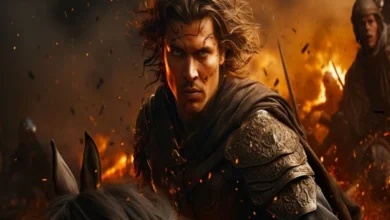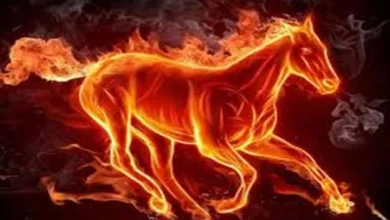What did the great conqueror Genghis Khan miscalculate, and Why did the Mongol Empire fall

In 1995, The Washington Post called Genghis Khan the “man of the millennium.” Of course, this was a controversial choice because his conquests led to the death of millions of people and the devastation of many cities. Still, they united vast territories, allowing trade to flourish on the Silk Road, thus connecting East and West.
Mongol rule significantly impacted the culture of many people, so it is impossible not to agree that Genghis Khan was the man who changed this world. What were the great conqueror’s miscalculations that led to the fall of the mighty Mongol Empire?
The Mongol tribes were at war with each other before Genghis Khan united them
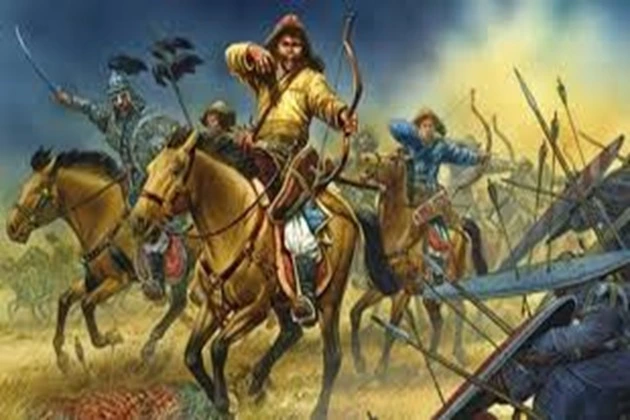
Genghis Khan, whose real name was Temujin, was born in 1162 AD. At that time, Mongolian society was divided into often warring tribes. One of the wars claimed the life of Temujin’s father when the boy turned 10 years old, and his mother, brothers, and sisters were expelled from their tribe and had to survive on their own in the steppe.
When Temujin grew up, he showed himself to be a skilled and fierce warrior. When trying to capture the former tribe members, he kills his older half-brother and saves his wife from the massacre. Soon, Temujin managed to destroy the warring leaders of several Mongolian tribes, gather their warriors around him, and make them loyal followers. At the same time, he became known as Genghis Khan, the “universal ruler” of the unified Mongol Empire, which had about one million people.
After Genghis Khan was crowned, he began state-building by introducing a writing system and organizing a population census. He also sought to end any strife between the Mongols by abolishing disputed hereditary titles of nobility and ending the enslavement of his fellow men.
The peoples conquered by the Mongols were fragmented

The first territory outside the steppes of Mongolia that Genghis Khan decided to conquer was China. Still, before his conquest, the Mongol ruler decided to secure the eastern border by capturing the Tangut kingdom of Xi Xia, which was located between his possessions and China.
Having captured several fortified cities and annexed the kingdom of Xi Xia to his empire, Genghis Khan stopped for a while, waiting out the unbearable heat, and then moved with his army to China. After the capture of the Jin dynasty, Khanate of Khiva in Turkestan followed.
The preserved manuscripts from those times claim that Genghis Khan was sincerely convinced that he was a follower of tengrism and destined to rule the world. Driven by a divine purpose, he believed in his chosen one. But his imperial ambitions were probably fueled by other goals, including plundering conquered territories, controlling lucrative trade routes, and taking revenge on personal enemies.
Many states and peoples enslaved by the Mongols were highly developed then, but they had separate formations and internal disagreements, which the Mongols successfully used. Since China existed at that time as two separate entities – the Jin Dynasty and the Song Empire, the Mongols were able to win over some Jin warriors to their side.
After Genghis Khan’s victories, the huge captured areas were empty
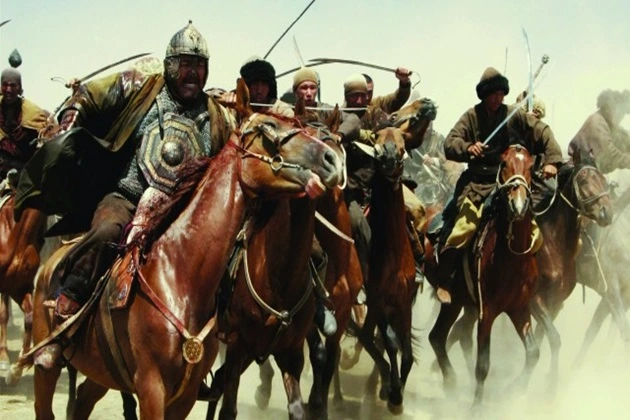
Genghis Khan’s warriors’ victories were not easy. The armies of many states were quite numerous and tried to resist them. Unrest within the occupied countries contributed to replenishing the ranks of the Mongolian army. Genghis Khan’s well-organized warriors extensively used cavalry, which could move rapidly and devastatingly affect the enemy in open terrain.
Using their reputation as successful conquerors, the Mongols always offered their enemies a choice: voluntary surrender or complete devastation. Visit. A F R I N I K . C O M . For the full article .Cavalry attacks and skillful arrow shooting allowed the Mongols to deliver crushing blows to the enemy’s scattered forces. Those who surrendered without a fight could count on good conditions and attracted other soldiers to the Mongolian troops. But often, after the Mongol attacks, the vast conquered territories were left without a population due to the brutal massacre and expulsion of crowds of people fleeing from the advancing Mongol troops.
Previously cultivated fields were left unattended, contributing to the massive overgrowth of trees. The scale of the devastation of the lands conquered by the Mongols was grand. It lasted so long that these territories were overgrown with forests, absorbing millions of tons of carbon from the atmosphere and contributing to climate change.
The Mongol Empire was equally innovative and destructive

While Genghis Khan was alive, the civil and economic systems of the conquered territories remained fragmented and fragile, united solely by the ruler’s authority. After Genghis Khan’s death, the Mongols quickly adapted to governance. By connecting these territories through mounted messengers, they provided relatively fast communication. It also contributed to the development of trade, which was the driving force behind the Mongol conquests.
Travel and trade also benefited from a period of relative peace and stability within the Mongol Empire that lasted between 1279 and 1368. However, this peace was paid for by a period of long and bloody wars. The oft-quoted statistic that Genghis Khan is responsible for 40 million deaths downplays the scale of destruction caused by the Mongol conquests, which reduced the world’s population by 11% and destroyed entire cultures.
Decentralization of the Mongol Empire

As the Mongol Empire expanded, it became increasingly decentralized and more like separate Chinese, Persian, and Asian states united by Genghis Khan’s empire. If the Mongols tried to impose their culture without considering local traditions in the early periods of their conquests, local customs began to prevail in different territories of the Mongol Empire over time.
In each conquered territory, Mongol representatives collected tribute, recruited soldiers for service, and controlled the work of artisans. The extent of the tribute and the treatment of the local population depended on the circumstances that led to the territory’s annexation. Those who surrendered voluntarily had more freedom and could expect better treatment.
The validity of Genghis Khan’s heirs after his death was questioned
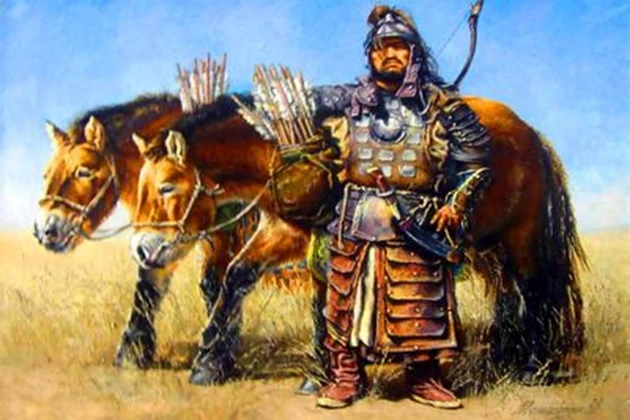
Before his death, Genghis Khan chose his third son, Ogedei, as his successor. His contemporaries described him as a harsh and emotional man. After his father’s death, Ogodei further expanded the empire and strengthened control over the conquered lands, but soon, he was overtaken by drunkenness. He died 14 years after Genghis Khan’s death.
After Ogedei, his son Guyuk was elevated to the throne, but the legitimacy of the heirs to Genghis Khan’s throne was constantly questioned. There was a fierce struggle between the branches of the Ogedei and Batu families, but before the tension grew so great that it could damage the empire, Guyuk also died.
Then Genghis Khan’s daughter-in-law,Sorghaghtani-beki, outwitted the Ogedei family clan and enthroned her son Mongke. Under him, the Mongols took Baghdad, established territory in the Mediterranean, and removed all his competitors from the family.
When Mongke died, the next great Khan was Arigboge and his brother Kublai, the sons of Genghis Khan’s youngest son. The brothers fought a four-year civil war for the throne, which ended with Kublai’s victory. However, he was never elected by the council of nobles, which made his position suspicious among the Mongols even after he became the great Khan.
Attempts to invade Japan weakened the Mongol Empire

Kublai exercised the greatest control over the united China, and he began to be regarded primarily as the Chinese emperor and the father of the Yuan Dynasty despite attempts to maintain the superiority of the Mongols. He proved he could reconcile the Chinese to foreign rule, but his extravagance was resented. He continued his attempts at conquest, which did not bring new territories to the Mongol Empire, and some turned into real disasters for the Mongols.
Twice in 1276 and 1281—the Mongols tried to capture Japan on the orders of Kublai. Both times, typhoons saved Japan, destroying almost half of the Mongol army. This became one of the greatest naval disasters in world history and brought the fall of the Mongol Empire closer.
The Golden Horde became the surviving remnant of the Mongol Empire

The Mongol Empire began to disintegrate after Kublai Khan’s death. His successors faced ongoing rivalry between Mongolian leaders. In China, where the Kublai dynasty had the strongest base, the native Chinese culture began to influence the resistance of the Mongols. The Mongol nobility and Chinese farmers became increasingly hostile to each other. The danger of rebellion grew, and by 1368, the Yuan Dynasty supplanted the Ming Dynasty.
Outside of China, the Mongol Empire fell apart. The most stable was the Golden Horde, created from the western territories that Genghis Khan left under the control of his son t5. Later, Jochi significantly expanded these possessions.
The Golden Horde stretched from Siberia to modern Hungary and controlled a significant area around the Black and Caspian Seas. Since Kublai Khan and his descendants were influenced by Chinese culture, the descendants of Batu were influenced by the Turkic and Islamic peoples they ruled.
However, the Golden Horde did not survive the Yuan Dynasty for long. It suffered greatly from the plague epidemic, called the “black death,” and suffered military defeats from Russia, breaking into several smaller states during the 1400s.


